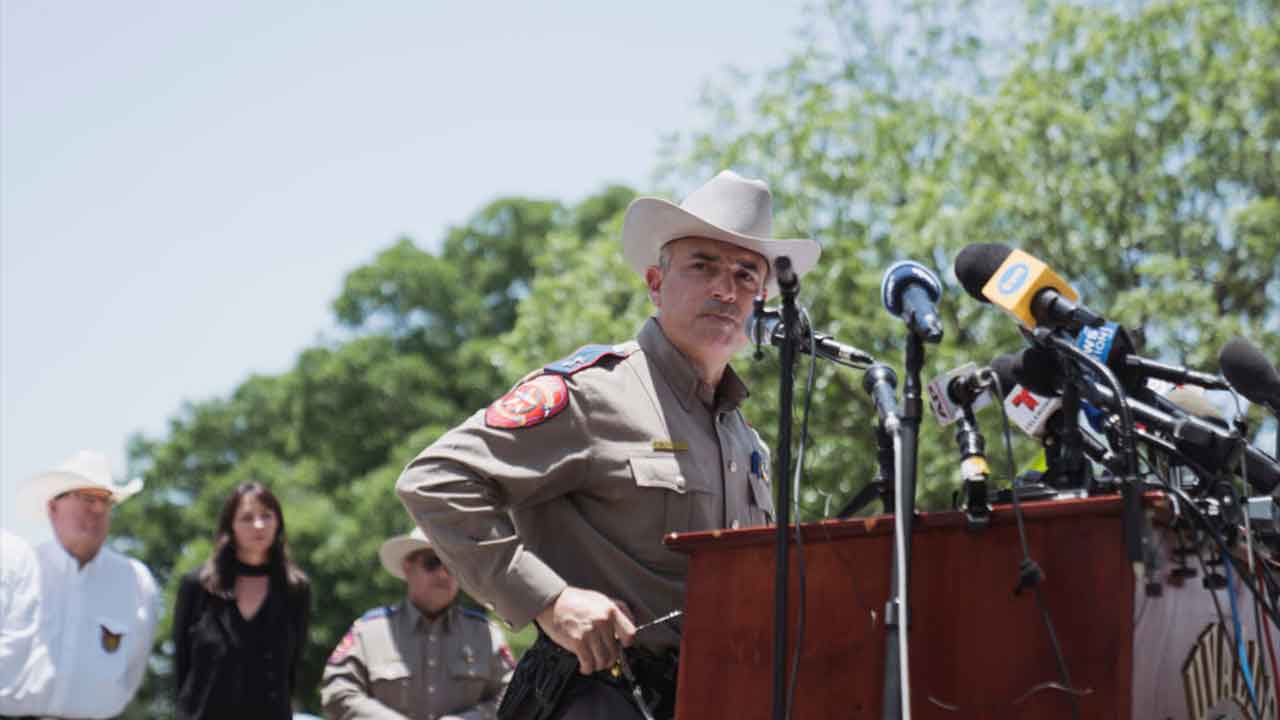Targeting shooters: technology that can isolate the location of gunshots

Inexpensive microphone arrays deployed in urban settings can be used to pinpoint the location of gunshots and help police respond instantly to the scene of crimes, scientists say.
The process works by recognising that a gunshot produces two distinct sounds: the muzzle blast, and the supersonic shockwave that follows it. Luisa Still of Fraunhofer Institute for Communication, Germany, told a meeting of the Acoustical Society of America in Denver, Colorado, this week that by using those two signals – in a process akin to that by which seismologists track seismic waves from earthquakes – police departments armed with the right equipment could pinpoint the location of the shot within seconds.
It’s not as straightforward as it sounds. In an urban environment, buildings and other structures can reflect, refract or absorb sound waves, causing the sounds of the shot to come at the microphones from any number of directions.
But it turns out, Still says, that it only takes two such sensor arrays to locate the source of a gunshot — and a good computer can do so very quickly.
In tests, her team began on a rifle range, where they confirmed that a pair of such microphone arrays could indeed determine the location of the shooter to a high degree of accuracy.
They then moved to an urban environment, where they repeated the experiment, though in this case the shooter was replaced with a propane gas cannon of the type used by farmers to scare away crop-eating birds.
Again, two microphone arrays were all that were needed to zero in on the source of the “shot”.
Not that this can work anywhere, any time. Still’s signal-location algorithms require maps of the surrounding buildings, the walls of which might affect the sound and, in extreme cases, create “blind spots” if microphone arrays aren’t properly deployed.
She also notes that research is ongoing as to whether it is better to put microphones at ground level or atop neighbouring buildings. There’s also continuing research around how many might be needed in complex urban cores, where there are a lot of buildings of varying height and echo patterns can become very convoluted. “We still need to evaluate [that],” she says.
There’s also the need to weed out noises that sound like gunshots, such as firecrackers, car-engine backfires and anything else that makes a sudden bang. “We are working on classification methods,” Still says, noting that these involve computerised “deep learning” methods that can be trained to distinguish such sounds.
Could similar sensors be deployed within a school building in order to locate a school shooter even more quickly that is currently possible? Still was asked.
“Oh, yeah,” she said. “I think that would be applicable.” Though she noted that it might also be acoustically “very challenging” to put into practice.
Later that same day, 19 school children and two adults were killed in Uvalde, Texas, in America’s worst grade-school shooting in nearly a decade.
Would the death toll have been lower if gunshot sensors such as Still’s were widely deployed? Who knows? But it was one of the most stunningly prescient scientific presentations imaginable, because she spoke less than an hour before the Uvalde gunman opened fire. It was far too late for her research to be able to deflect the tragedy that was about to unfold, but close enough to it to underscore the urgency of what she was doing.
This article was originally published on Cosmos Magazine and was written by Richard A Lovett. Richard A Lovett is a Portland, Oregon-based science writer and science fiction author. He is a frequent contributor to Cosmos.
Image: Getty Images
